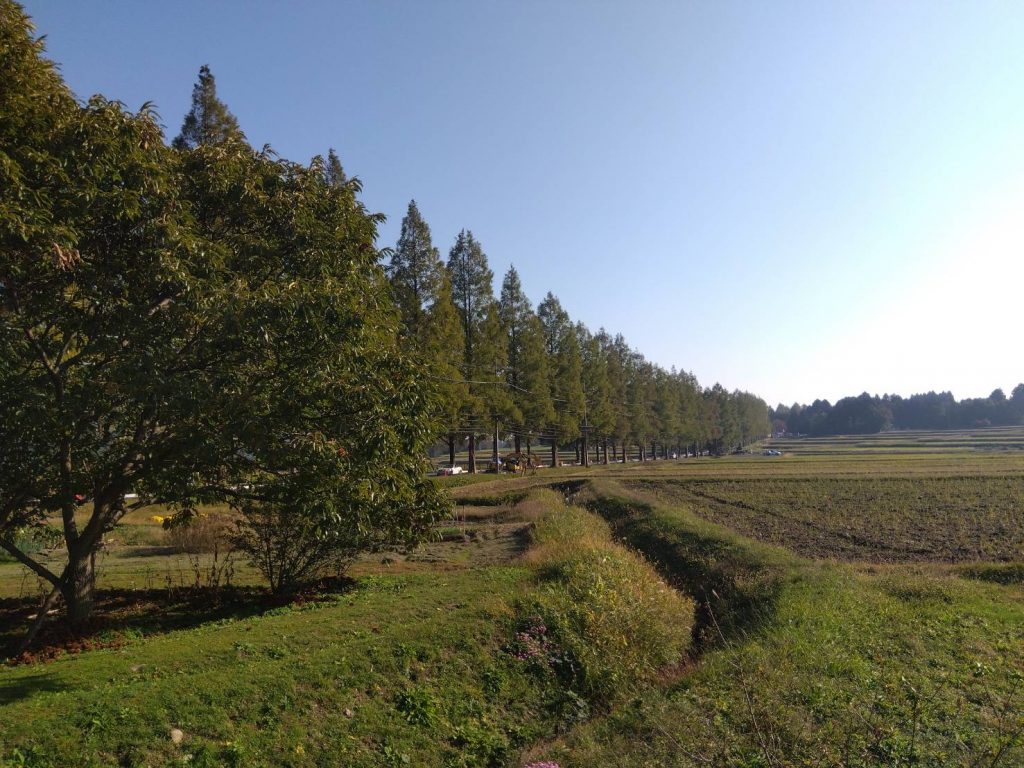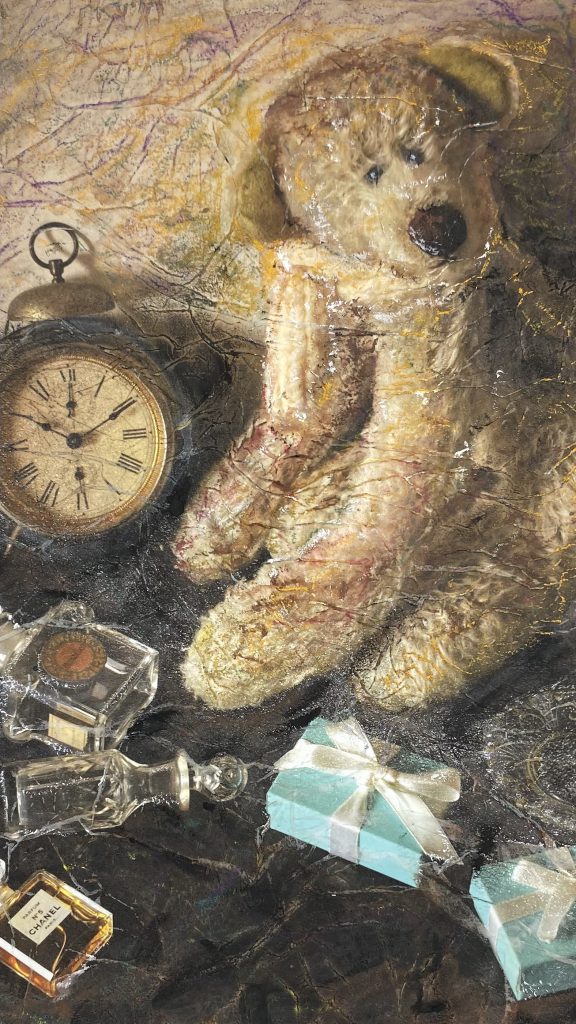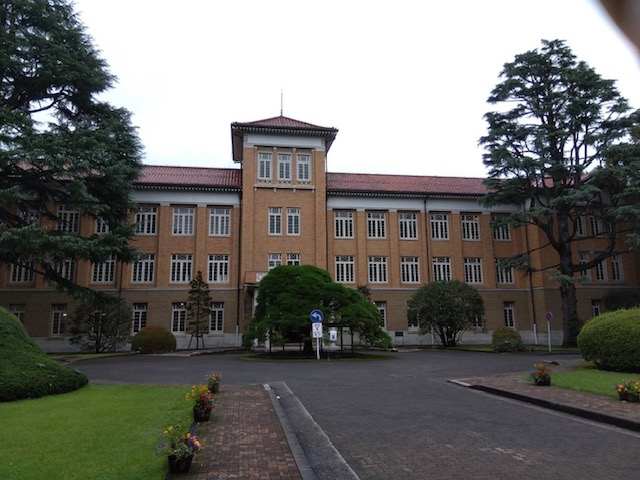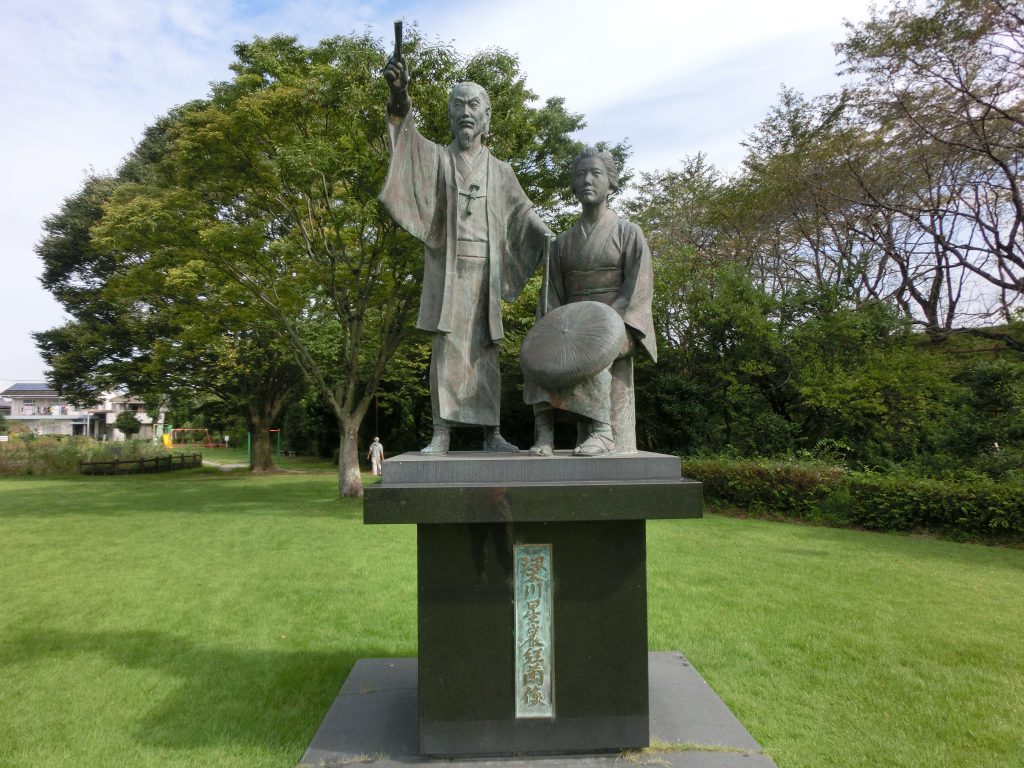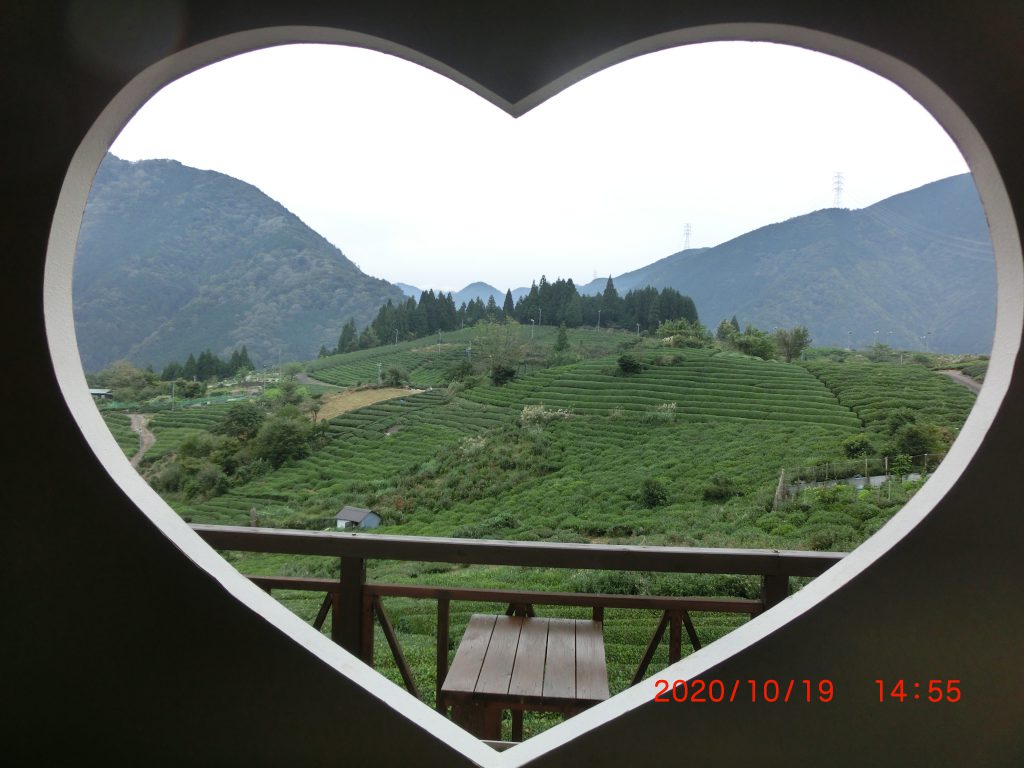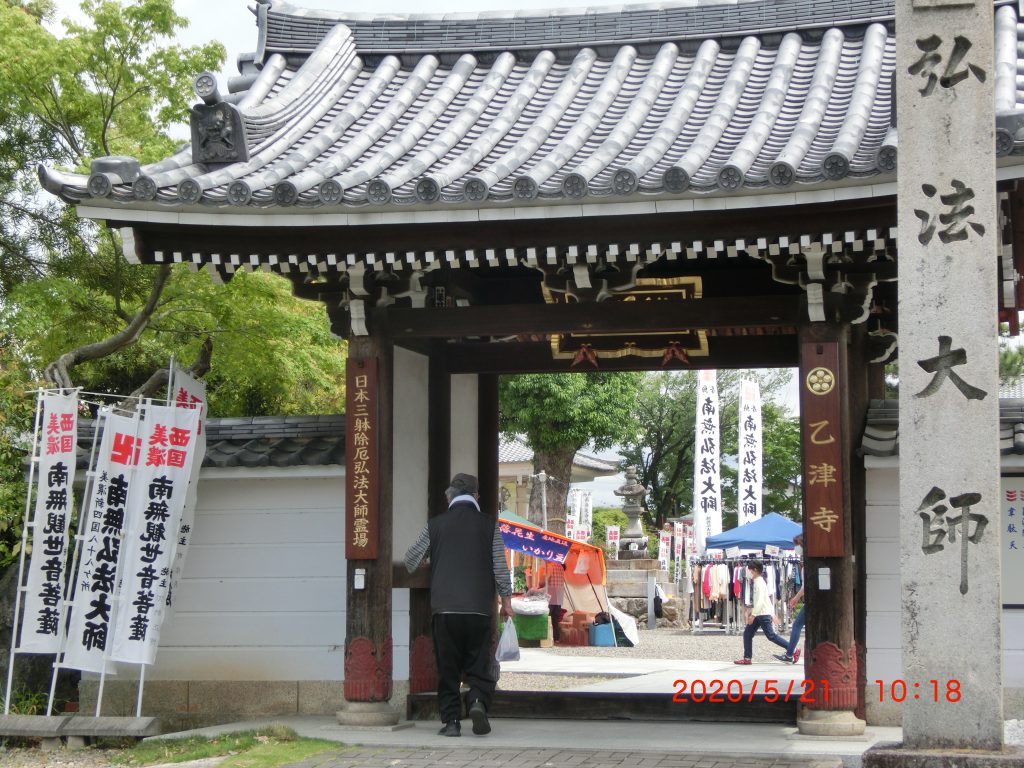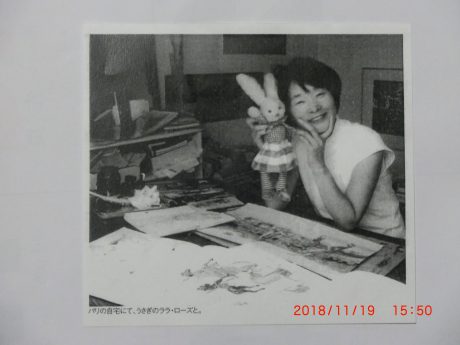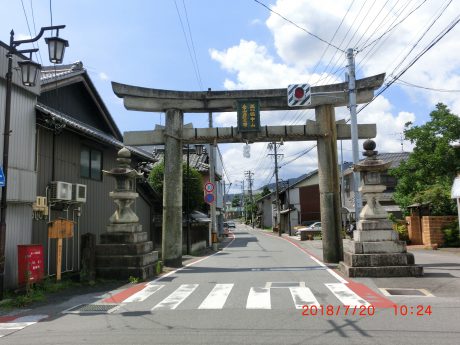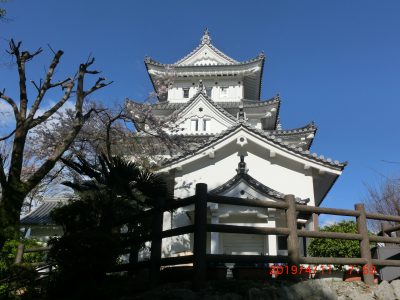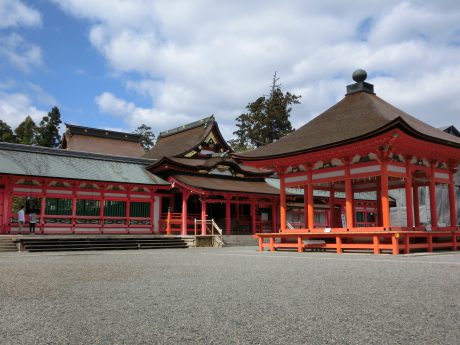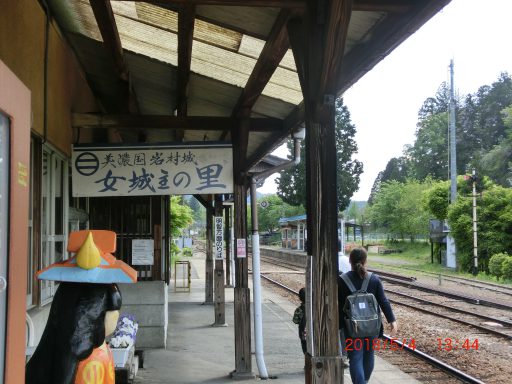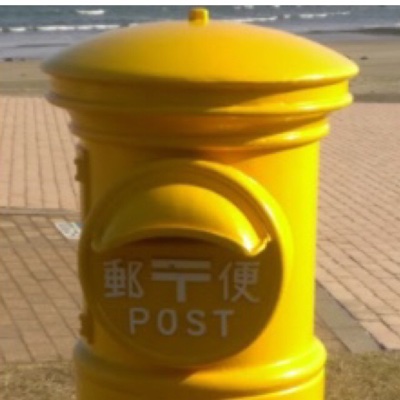
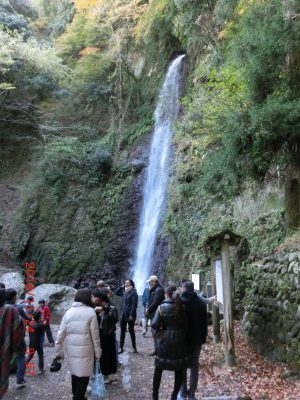
養老の滝
コンテンツ
KURITA’S PHOTO STORY④
(英語訳栗田)
養老の滝
Yōrō Waterfall
養老山地の巨岩老樹の中を流れ落ちる養老の滝は、北原白秋をはじめ多くの文人墨客が訪れた名所で、一帯は養老公園として整備され、養老寺、養老神社など歴史に触れながら四季折々の自然を楽しむ事が出来ます。
Running down the cliff, and through old trees in the Yōrō mountains, Yōrō Waterfall has been regarded as a showplace and visited by many writers and artists such as Kitahara Hakushū.
The area is designated as a national park and kept in good condition. So, you can come in touch with both history and seasonal natural beauty.
駅の駐輪場に自転車をとめて歩いて養老公園に向かいます。
I parked my bicycle at the station’s parking space and started for Yōrō Park on foot.

養老駅 (養老鉄道養老線)
Yōrō Station (Yōrō Railway)

駅のホームに飾られているたくさんのひょうたん
Many gourds are hanging from the ceiling of the station’s platform.
Why gourds? You’ll soon find out.

養老駅前広場にある養老鉄道の創設者、立川勇次郎の業績をたたえる顕彰碑
Monument erected in honor of Tachikawa Yūjirō, the founder of Yōrō Railway.
立川勇次郎は文久二年(1862)大垣に生まれ、東京で代言人(現弁護士)となりますが、日本の近代化には大量高速輸送が必要と考え実業家に転身します。
日本の電気鉄道の先駆けとして、大師電気鉄道(現京浜急行鉄道)を開設し、その後故郷の発展の為に養老鉄道を設立、また現イビデン株式会社も設立するなど西濃の近代化に大きく貢献しました。
He was born in Ōgaki in 1862. He went to Tōkyō and became a lawyer, but he started a new career as a businessman, considering that rapid mass transportation was needed for Japan’s modernization.
He established Daishi Electric Railway (present Keihin Express Railway) as a pioneer of Japan’s electric railway. After that he came back to Ōgaki and established Yōrō Railway for the development of his hometown.
He also became the first president of Ibiden Co.Ltd. His contribution to modernization of Seinō district (south-west part of Gifu prefecture) was extremely great.
養老公園入口
Entrance to Yōrō Park

養老孝子坂 「養老に伝わる孝子伝説にちなみ公募により名付けられた」とあります。
This slope was named after the legend of the dutiful woodcutter.

養老寺 (鐘楼堂)
Yōrō Temple (Bell Tower)
養老寺は西美濃三十三霊場の二十五番札所、開基は源丞内で718年創建
Genno Jōnai founded this temple in 718.

養老寺 (不動堂)
Yōrō Temple (Fudō-dō)
養老寺の由緒
『昔、この美濃国(岐阜県)多度山に貧しい樵(きこり)がいました。
いつも山へ入って薪(たきぎ)を採り、売ったお金で父の好きな酒を買って飲ませていました。ある日薪を採りに山へ入ると、苔むした岩間から水が流れ、酒の香りが漂い、なめてみると酒の味がしました。喜んだ樵はひょうたんにつめて持ち帰り、父に飲ませますと、大変うまいお酒と大そう喜びました。
このことがやがて奈良の都にまで聞こえていきました。時の帝の元正天皇は、霊亀三年(七一七)、多度山に行幸になって、美泉に浴され、痛むところをお洗いになると速やかにご回復され、醴泉は美泉であり、老を養う水とおほめになって、年号を養老元年と改められ、天下の老人八十以上に位一階を授けられるなどの恩賜があり、孝子の節婦などを表彰されました。
養老二年には、七堂伽藍を御創建になり、寺号を賜って滝寿山元正院養老寺と称し、滝守守護不動明王(県重文)を勅納され、寺家三十坊、寺領三百石を賜り、源丞内を開祖とし、法相宗を旨とし、同帝の天牌(はい)を奉安し、宝祚萬寿天下太平を祈る勅願所となりました。』(養老寺発行「養老志」より)

養老神社への石段
Stone steps leading to Yōrō Shrine

養老神社 拝殿
Yōrō Shrine


養老神社境内から湧き出る菊水泉
Kikusuisen located within the grounds of Yōrō Shrine
昭和60年に環境庁から名水百選の指定を受けました。
In 1985 Yōrō waterfall and Kikusuisen was designated as one of the top 100 natural water sites selected by the Environment Agency.

春の観光シーズンの幕開けに若水取りが行われ「滝守り不動」に献水し、シーズン中の安全を祈願します。
To open the tourist season in spring “Wakamizu-tori”(drawing of the first water) ceremony is held and the water is offered to Takimori Fudō (the God of Fire, who protects Yōrō Waterfall) to pray for the safety during the season.

おたきみち道標
Guidepost showing the way to the waterfall
養老サイダー(後述)創設者の日々野寅吉氏により大正十一年に建てられました。
It was erected by Hibino Torakichi, the founder of Yōrō Cider in 1922.

妙見橋
Myōken Bridge
養老の滝から流れる滝谷に架かる七つの橋の一つ。
下流から松風橋、不動橋、渡月橋、妙見橋、紅葉橋、万代橋、みゆき橋、それぞれ違って趣があります。
There are seven bridges across the waterfall valley.
Myōken Bridge is the middle one. Each bridge has its own taste.

「おたき道」は、はじめはアスファルトにおおわれた緩やかな坂ですが・・・
The way to the waterfall begins with a gentle slope coverd with asphalt.

5分ほど歩くと勾配が急になり、コンクリート製の階段に変わります。
After five minutes’walk, the slope becomes a little steep and asphalt turns into steps made of concrete.

養老の滝遠景
さらに5.6分歩くと、滝にたどり着きます。
After another five or six minutes’walk, the waterfall comes into view.


Some mistakes are found in this explanation board.
The biggest one is that “Emperor Genshō” should be “Empress Genshō”.

瀧不動尊像
Takimori Fudō (the God of Fire, who protects Yōrō Waterfall)

養老の滝
標高280mにある、高さ約30メートル幅約4メートルの名瀑は養老のシンボルです。
江戸時代には浮世絵で有名な葛飾北斎がその雄麗な姿を風景画に描き残しているほどで、日本の滝百選に選ばれています。
Located 280m above sea level, this celebrated waterfall about 30m high and 4m wide is the symbol of Yōrō Town.
In the Edo Era, the noted Katsushika Hokusai made its magnificant landscape into a splendid ukiyo-e.
It ranks among the top 100 waterfalls in Japan.

江戸時代の浮世絵師、葛飾北斎によって描かれた『美濃国養老の滝』

吉田商店とひょうたんらんぷ館
Yoshida’s shop and his Gourd Lamp Museum
帰路に口にした「復刻版養老サイダー」はとてもさわやかな味がしました。
On my way back, I drank reproduced Yōrō Cider. It tasted very refreshing.


ひょうたんらんぷ館内部
Inside of Gourd Lamp Museum

吉田さん一番のおすすめの作品
Mr.Yoshida’s most favorite one.
自家栽培のひょうたんに穴を開けたランプ、手作りの柔らかい灯りに心が温まります。
Mr.Yoshida cuts holes in his homegrown bottle gourds.
His handmade hyōtan(gourd) lamps give out mellow light, which is very heart-warming.

養老サイダー工場跡
The remains of Yōrō Cider factory

養老サイダー 日々野兄弟商会当時の看板
養老サイダーの創始者、日々野寅吉はもとは大垣で伊吹サイダーを製造販売していました。
菊水泉の美味しさに惹かれ、明治33年に工場を、35年に本社を養老公園内へ移転し、名前を養老サイダーと改めて、製造販売をしました。
明治から戦前まで広く人気を博していましたが、平成12年に製造中止、平成26年には会社が廃業となり現在では幻のサイダーとなってしまいました。
Hibino Torakichi had originally made and sold Ibuki Cider in Ōgaki.
Attracted by the good flavor of Kikusuisen, he moved his factory into Yōrō Park in 1900.
He then moved his company itself into the park in 1902 and changed his cider’s name into Yōrō Cider.
During Meiji Era and until prewar days, it enjoyed wide popularity.
However, in 2000, its production was stopped.

「歓迎とうろうランプ」に送られて公園をあとに
This welcoming Lamp saw me off.
養老駅にもどり、養老鉄道名物のサイクル・トレインに乗って帰路に着きます。
I walked back to the station to get on Cycle Train.

サイクル・トレインがホームへ
Cycle Train slides into the platform.

自転車と共にサイクル・トレインに乗り込む
I get into the train with my bicycle.
The train goes under Meishin Express Highway.
養老の紅葉編へ

